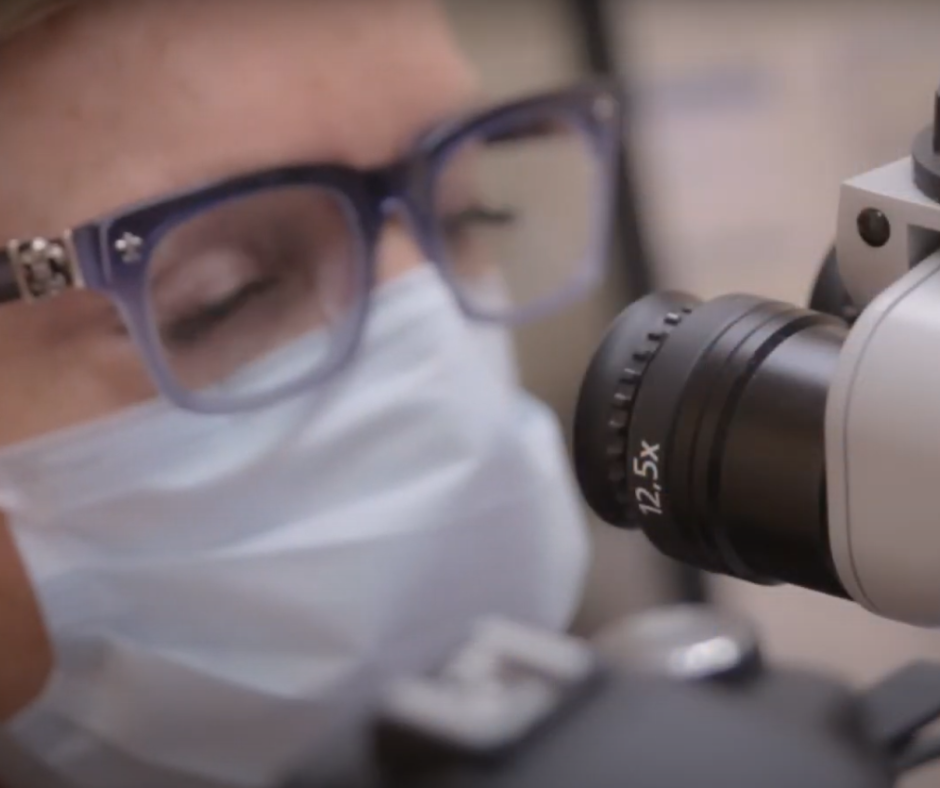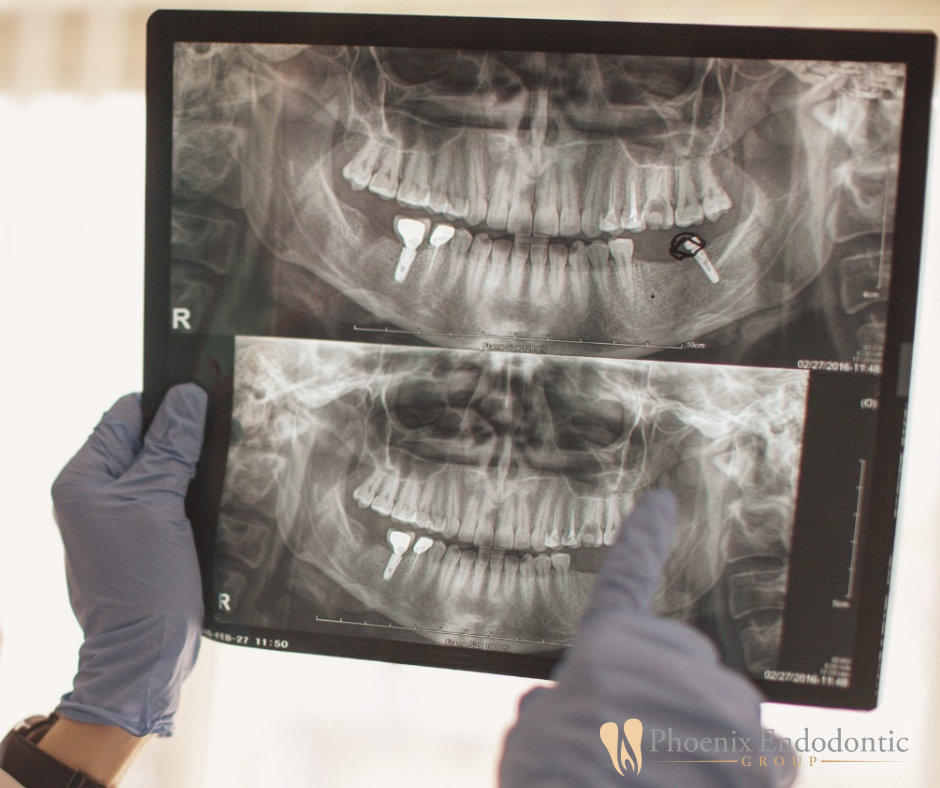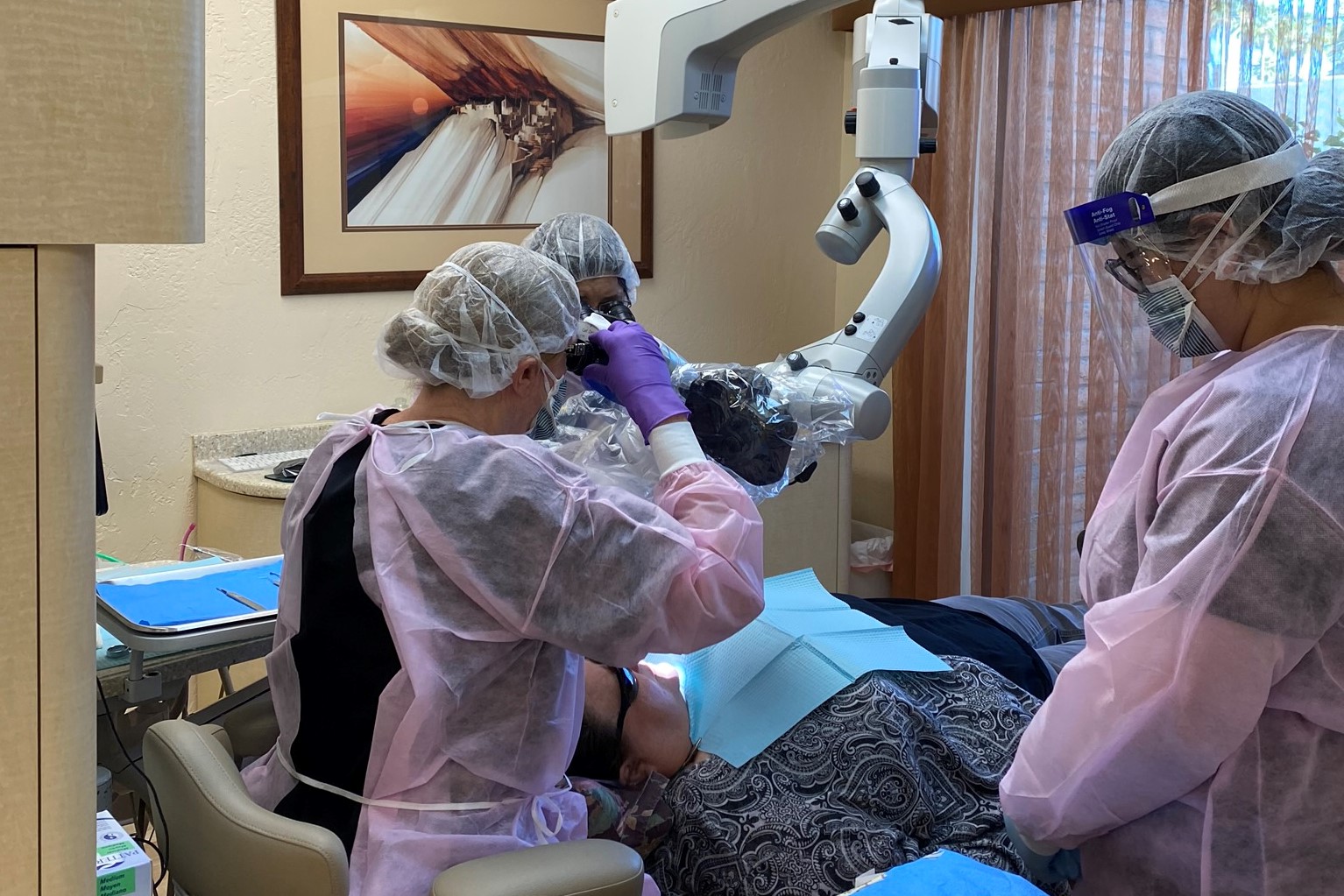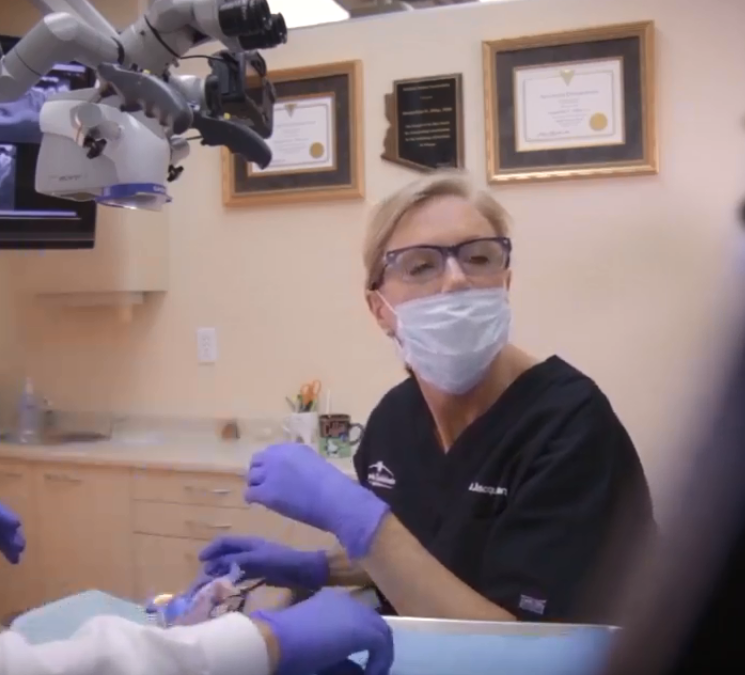
by Dr. Jacqueline S. Allen | Mar 10, 2025 | Dental Emergency, Dentistry, Endodontist
Like any medical emergency, dental emergencies require your quick response. If you have an injured tooth, it’s important that you see an endodontist immediately.
You should call 911 and head to an emergency room if an injured tooth has caused an abscess and you are having trouble breathing or swallowing, or if your jaw is broken. Otherwise, call your endodontist for an emergency appointment. At Phoenix Endodontic Group, we can provide emergency care 24/7, so call as soon as you need us, day or night.
Here is a quick guide to ways an endodontist might repair a tooth injury.

How Endodontists Treat Common Tooth Injuries
- If you come to your endodontist with a chipped or cracked tooth – they may recommend reattaching the tooth part with bonding material, placing a crown on the tooth to protect it from further damage, or performing a root canal if the crack in the tooth caused injury to its nerve.
- If you present with a dislodged or knocked-out tooth – they will want to know how recently the injury occurred. Teeth that have been knocked out of the mouth can sometimes be successfully placed back in the mouth if the patient sees an endodontist within 30 to 60 minutes of the incident. Avoid touching the root surface of the injured tooth and handle it carefully. For dislodged teeth, it may be possible for the endodontist to push the tooth back into place and stabilize it. Dislodged teeth sometimes also require root canal treatment.
- If you come in with a horizontal fracture – they will take images to determine the location of the fracture. A fracture near the tooth’s root may be able to be treated with a stabilizing splint, and possibly a root canal. A fracture across the root closer to the gum line is harder to treat and may result in the tooth having to be extracted.
Following many tooth injuries, your endodontist will recommend an annual check for root resorption, where your body rejects the injured tooth and dissolves the tooth root structure.
Don’t Delay – Call Our Office Immediately About Your Injured Tooth
Never delay treatment of an injured tooth. Call us at 602-242-4745 to make an appointment. Our practice offers emergency treatment options to ensure you can get the right treatment when you need it.

by Dr. Jacqueline S. Allen | Feb 20, 2023 | Blog, Dental Implants, Dentistry
Dental implants have provided many of us with reliable, attractive, and functional teeth in recent decades. Smiles impacted by total or partial natural tooth loss have been restored to their previous luster – or better!
However, while dental implants have a success rate upwards of 95 percent, failure is possible. You can feel more confident about having a dental implant procedure, and protect your investment in a future that includes robust oral health, if you understand several key factors leading to dental implant success.

What Makes A Dental Implant Successful?
- An accurate diagnosis. Making sure that dental implants are a workable approach to addressing failing or missing teeth is a crucial first step. Your dental professional will do a thorough dental examination, ask questions about your overall health, and assess your gums and your jaw’s bone density.
- Prompt execution of the dental implant procedure. Once it’s been determined that dental implants your solution, planning should begin immediately. Dental implants are completed in stages, with healing time in between each one, so the sooner the process begins, the better.
- Systemic health concerns are addressed. Diabetes, smoking, low bone density, and gum infection can all make your dental implant more likely to fail. Discuss any health issues with your practitioner and follow their directions, as well as those of the rest of your care team.
- A skilled practitioner using up-to-date technology. Dental implants go more smoothly when a dentist has additional training in implants and has the tools to place the implants accurately. The Phoenix Endodontic Group, like many practices that place dental implants, utilizes cone-beam computed tomography (CBCT) technology, providing 3-D images of our patients’ soft tissues, teeth, nerves, and bone in one scan.
- Your commitment to ongoing care. Your commitment to proper self-care can make or break a dental implant’s success. To avoid the most common reasons for dental implant failure, you’ll need to brush and floss your implants daily, visit your dentist regularly for checkups, get LOTS of calcium, and proactively address conditions that damage your mouth, such as smoking and bruxism (grinding your teeth).
“Many of our dental implant clients do not initially realize that the success of the implant procedure requires partnership between them and their dental professional,” says Dr. Jacqueline S. Allen, who practices at the Phoenix Endodontic Group. “Our staff work closely with clients before, during, and after the dental implant process to ensure best results.”

by Dr. Jacqueline S. Allen | Sep 21, 2022 | Blog, Dental Implants, Dentistry, Phoenix Endodontic Group
If you have a failing tooth (or teeth), you may be wondering if a dental implant might be a workable solution for you. Implants take the place of your natural teeth. They are anchored to your jawbone, and topped with an artificial tooth. Dental implants have a similar success rate to root canals, when performed by a dentist or endodontist with significant experience doing them. They are not, however, the ideal solution for every patient.
Let’s take a look at some factors to consider before getting a dental implant.

What Important Factors Should I Consider Before Getting A Dental Implant?
-
Are there less invasive options that could save the tooth? In some cases, a tooth that is threatened by infection, decay, or advanced gum disease may be able to be saved. Root canal treatment and periodontal (gum) procedures may be solid alternatives; your dental provider will be able to discuss their potential to help you.
-
Have I discussed my health conditions with my provider? The endodontist or implantologist who performs your dental implant will conduct a thorough examination, and take images of your teeth. They will also ask about your medical history. You should discuss any serious conditions such as diabetes or cardiovascular disease. You should also let your provider know if you’re a heavy smoker or if you’ve had radiation therapy to your head or neck.
-
Will I need additional procedures to prepare for my dental implant? Depending on your individual circumstances, you may need a sinus lift, tooth extraction or removal of parts of your damaged tooth, bone augmentation, gum treatment, or other procedures to prepare for your dental implant. Your provider can explain the need for each procedure and how it fits in your treatment timeline.
-
Will I have to commit to multiple appointments over a number of months to complete the dental implant process? Depending on the approach that your provider recommends, you may need to come to a number of appointments to plan, prepare for, and undergo all the procedures that complete your dental implant. Discuss any scheduling constraints with your dental professional and their staff.
“To ensure that a dental implant is the right approach to improve your oral health, our staff will discuss all relevant factors impacting the process before treatment begins,” says Dr. Jacqueline S. Allen, who practices with the Phoenix Endodontic Group. “This ensures your treatment team has all the information needed to provide excellent treatment. It also gives peace of mind that you are making the right choice.”

by Dr. Jacqueline S. Allen | Feb 22, 2022 | Blog, Dental Implants, Dentistry
When you are missing or have failing natural teeth, you may wonder if your only option is to live with this condition. You could get dentures, but maybe you worry they won’t be compatible with your lifestyle, or take too much effort.
Dental implants are the other common solution to natural tooth loss. They are not for everyone, but different types of implants exist for different treatment challenges. Here’s a quick guide to three common types of dental implants, plus one more also gaining popularity.
 Understanding The Three Types Of Dental Implants
Understanding The Three Types Of Dental Implants
Endosteal Implants – These are the most commonly used dental implants, one of two types recommended by the American Academy of Implant Dentistry. A titanium cylinder (screw) or blade is placed in the jawbone, in the socket of the missing tooth. Endosteal dental implants take four to six weeks to heal, while the implant bonds to the bone through a process called osseointegration. After the healing is complete, an abutment is placed where the new tooth is placed securely on top of it.
Subperiosteal Implants – These implants are an alternative for patients who are not good candidates for the endosteal dental implant procedure. Instead of being placed directly into the jawbone, they are placed between your jawbone and your gum tissue. They can work well for patients who don’t want to use bone augmentation to strengthen their jawbone, or whose jaw simply won’t support the surgery for endosteal dental implants.
All-On-4® – For patients missing an entire arch (upper or lower) of teeth, this implant approach provides a cost-effective alternative to replacing each tooth individually.
During an All-on-4® dental implant procedure, four angled titanium implants are placed in your mouth for each arch of missing natural teeth. You may be provided a special set of abutments and temporary overdentures if your dental provider has elected to do a “teeth in a day” approach. You will eat a modified diet for up to six months while osseointegration is taking place. Once that process is complete, you’ll receive a permanent set of overdentures and can return to eating all the foods you love.
Another new type of popular dental implant is called the Mini-Dental Implant (MDI). An MDI is primarily used to stabilize a lower denture. It is about the width of a toothpick and consists of a socket, ball, and a rubber ring on the end. This type of implant is less invasive, requires less healing time, and generally lasts for many years, depending on the hygiene regimen and other factors for individual candidates for this procedure.
“Dental professionals who provide dental implants have a number of options to fit a variety of patient treatment scenarios,” says Dr. Jacqueline S. Allen, who practices with the Phoenix Endodontic Group. “Our practice is happy to discuss which type of dental implant holds the greatest chance of providing a permanent solution for your natural tooth loss.”

by Dr. Jacqueline S. Allen | Dec 22, 2019 | Blog, Dental Implants, Dentistry
While it’s often possible to save an injured or infected tooth, sometimes extraction is the best option. In those cases, it is important to replace the tooth as soon as possible with a dental implant. If gaps from extracted teeth are left as is, the interaction between the remaining teeth, the jawbone, and gums is disrupted. The jaw can lose bone density, causing it to shrink. Gums can pull away from the remaining teeth, and the teeth may loosen and move into the gap left by the extraction.

How Soon Can I Have A Dental Implant After A Tooth Is Removed?
The answer to how long you will have to wait for a dental implant after a tooth extraction – and how long the implant process will take to complete – depends largely on where the extracted tooth was located and the general state of your oral health.
Front teeth that had no infection at the time of extraction and had small roots (such as an incisor or canine) may be able to receive the dental implant the day that the tooth is removed. A crown can be placed on top of the implant in a few months, after the implant has integrated into the jaw bone. If the tooth in question was a back tooth, or had longer roots, it may be necessary to wait two or three months after extraction to place the dental implant. If the extracted tooth was infected, this can delay the placement of the dental implant even longer, in order to allow the site of the extraction to heal fully.
Bone loss in the jaw can cause a cascade of problems after a tooth is extracted, and if a patient’s bone density at the site of the extraction is low enough, they will likely require a bone graft. Sometimes the amount of bone to be grafted is significant enough that it will require several months for the graft to be integrated into the jaw bone. At other times, the amount to be grafted is small enough that it can be done at the same time the implant is placed.
“When preparing to provide a dental implant, it is important not to rush to place the implant,” says Dr. Jacqueline S. Allen, an endodontist practicing with the Phoenix Endodontic Group. “Our dental specialists can conduct a thorough examination and discuss the factors that will influence the timeline of your dental implant process.”

by Dr. Jacqueline S. Allen | Aug 19, 2019 | Blog, Dental Implants, Dentistry, Endodontics, Endodontist
Risk management is a key part of our everyday lives. When it comes to managing dental health, patients want to be sure that a recommended procedure is safe as well as effective. In the past couple of decades, dental implants have become a popular option for replacing missing or failing teeth. Many people, though, question whether implants are the best choice for their oral health challenges.
While dental implants are not the right choice for every individual, they are in many cases a safe, effective restoration. Their record for safety extends beyond the immediate period after the implantation and has been well-documented for patients with a variety of oral health situations.

Factors That Make Dental Implants A Safe Choice
- Dental implants are unlikely to impact the rest of your mouth. When only one or a few teeth are failing, fixed bridges may be suggested as an alternative to an implant. However, unlike a bridge, dental implants do not require the adjacent natural teeth to be altered. Implants are impervious to tooth decay. They are also unlikely to cause gum disease if a patient follows a normal daily oral health care regimen.
- Dental implants have proven to be safe for most adults who can undergo an extraction or other oral surgical procedures. Two key factors in determining if dental implant surgery is appropriate are gum health and the amount of bone density in the jaw. If a candidate for dental implants has healthy gums, has adequate bone density, and lacks any serious underlying systemic health condition, the implant procedure is usually considered safe.
- Dental implants, like root canals, have a very high long-term success rate. Longitudinal studies have shown that dental implants have a success rate of around 98 percent. What this means is that if you take care of your dental implant properly, it could last for decades, if not the rest of your life.
“When evaluating a patient to receive a dental implant, our practice considers many factors. When the circumstances are right, implants are a safe choice to replace missing or failing teeth,” says Dr. Jacqueline S. Allen, an endodontist practicing at the Phoenix Endodontic Group.












